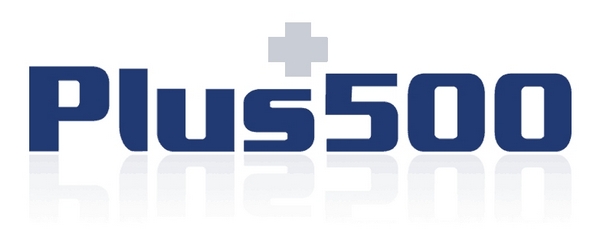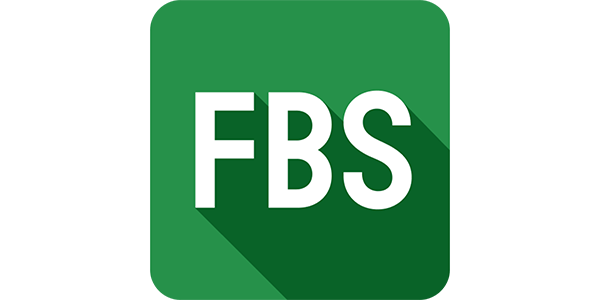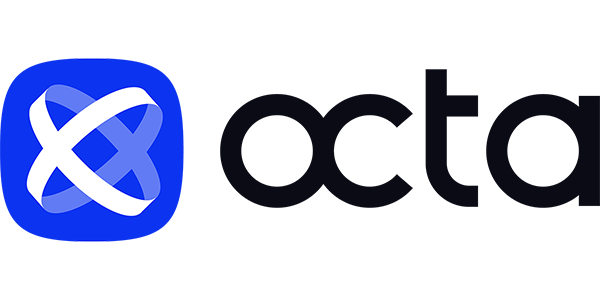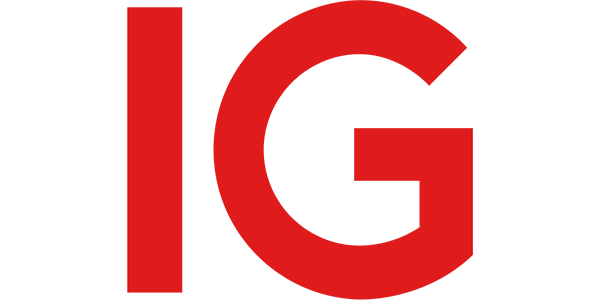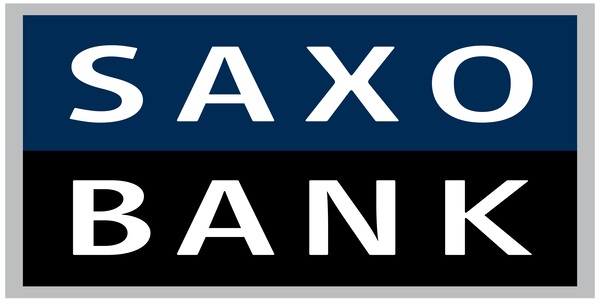- List of The Best Platform for Trading
- Philippines Market Overview
- Market & Regulatory Context in the Philippines
- Criteria for Choosing a Trading Platform in the Philippines
- Top Trading / Brokerage Platforms Available to Filipino Users (2025)
- Top Platforms for Filipino Users, 2025
- Strengths & Weaknesses of Trading Platforms in the Philippines
- Criteria for Choosing a Trading Platform in the Philippines
- Popular Instruments for Filipino Traders
- FAQs
List of The Best Platform for Trading
Here’s a quick comparison of the best trading platform based on their compatibility and market access.
| Best For | Commision | Min Dep | Leverage | Platforms | ||
|---|---|---|---|---|---|---|
| Copy trading, casual equity/ETF buyers | Spread-only on many CFDs | ~$200 | Up to local cap | eToro Web & Mobile | ||
| Simple UI, quick order entry | Spread + swaps | From $10 | Up to local cap | IQ Option Web & App | ||
| CFD traders who want a clean terminal | Spread-only; GSLO premium on some markets | Varies by region | Up to local cap | Plus500 Web & App | ||
| Micro sizing, MT4/MT5 users | Raw: ~$3–3.5/lot/side; Standard: spread-only | From $5 | Up to local cap | MT4 MT5 Mobile | ||
| Cent/micro tests, flexible lot sizing | By account type (spread or commission) | From $1 | Up to local cap | MT4 MT5 App | ||
| Minimal setup, mobile-first users | Typically spread + swaps | From $25 | Up to local cap | MT4 MT5 OctaTrader | ||
| Raw pricing + cost transparency | Raw: ~$3–3.5/lot/side; also spread-only tiers | Varies by region | Up to local cap | MT4 MT5 Web | ||
| Fixed/variable spread choices | Usually no ticket commission; swaps apply | $100 | Up to local cap | AvaTradeGO MT4 MT5 | ||
| Education-focused workflows | Spread + swaps | Varies (often low) | Up to local cap | Capital.com Web App | ||
| Execution-focused, multi-platform users | Raw: ~$3–3.5/lot/side; Standard: spread-only | Varies (often $0–$200) | Up to local cap | MT4 MT5 cTrader TradingView | ||
| Broad market access via web terminal | Variable spread; share/CFD fees by venue | Often $0 | Up to local cap | IG Web Apps ProRealTime MT4 | ||
| Listed products and advanced orders | Exchange/clearing fees (listed) | Higher minimums (tier-based) | Per venue/margin rules | SaxoTraderGO/PRO | ||
| API users, listed-market access | Exchange + routing commissions | Varies by region | Per venue/margin rules | TWS IBKR Mobile APIs |
Philippines Market Overview
Economic Performance & Outlook
- The Philippines economy grew by 5.6% in 2024, driven by steady household consumption and infrastructure investment.
- For 2025, forecasts place GDP growth in the 5.5%–6.0% range, although some revisions suggest more conservative expectations due to global headwinds.
- According to the Asian Development Bank, the Philippines remains one of the more resilient economies in Southeast Asia, though vulnerability to external shocks (e.g. commodity prices, trade disruptions) is nontrivial.
- The government recently revised medium-term growth targets amid global uncertainties, lowering its 2025 forecast to 5.5%–6.5% from earlier more aggressive estimates.
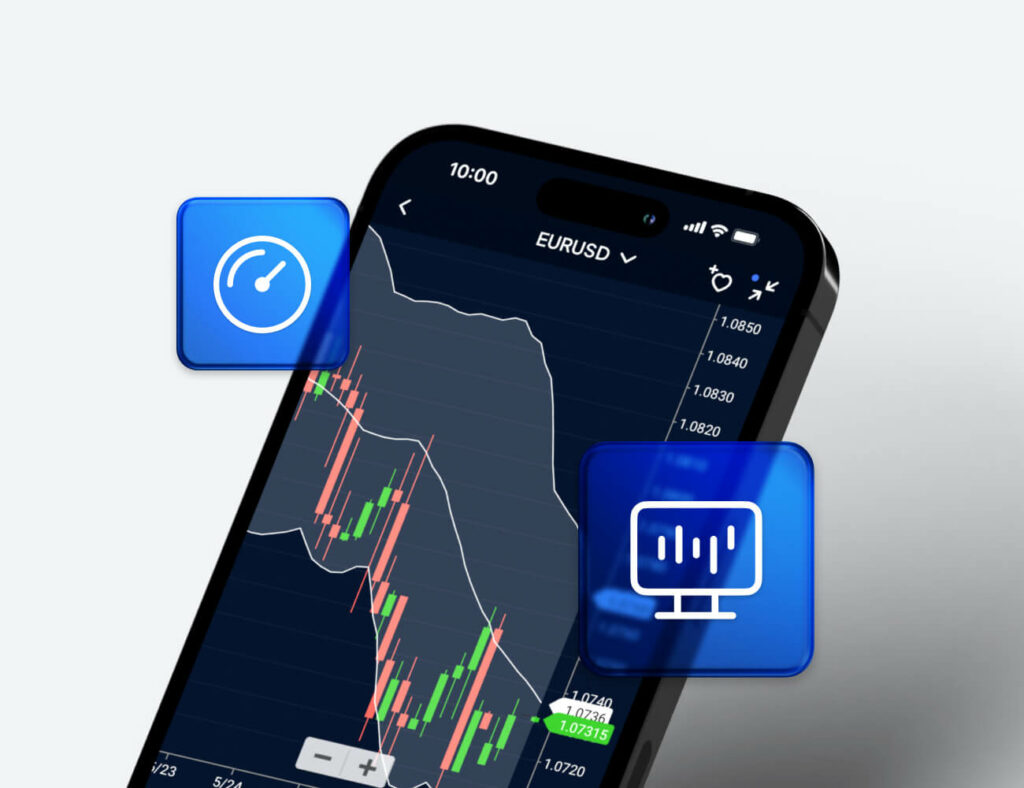
Inflation, Monetary & Fiscal Policy
- Inflation in the Philippines has been relatively contained, often hovering within or slightly below central bank targets.
- The Bangko Sentral ng Pilipinas (BSP) has adjusted interest rates in response to inflation trends and economic growth pressures—recent rate cuts have aimed to support growth amid subdued inflation.
- The fiscal deficit is expanding modestly; the government plans measures to manage public spending while supporting growth.
Financial Markets & Stock Exchange
- The Philippine Stock Exchange (PSE), formed from the merger of the Manila and Makati exchanges (1992), is the primary equities market in the country.
- The benchmark index PSEi recently stood at ~6,027 (as of September 26, 2025), down about 18.9% year-on-year, reflecting market volatility and external pressure.
- The index composition includes sectors such as financials, industrials, services, property, and mining/oil.
- Volume and trading value remain solid, though investor sentiment is sensitive to global risk, policy changes, and macro news.
- The PSE is pushing for broader inclusion, aiming to make capital markets more accessible to small investors and wage earners.
Key Economic Drivers & Sectors
- Domestic Consumption & Remittances: Household consumption remains a pillar of growth; remittances from Overseas Filipino Workers (OFWs) inject stability into foreign exchange inflows and support consumer demand.
- Infrastructure & Construction: Government infrastructure programs have been a focus, helping drive demand in construction, materials, and related sectors.
- Business Process Outsourcing (BPO) & IT / Services: The Philippines continues to be a global hub for BPO, providing stable employment and export income in services.
- Manufacturing & Exports: Manufacturing (electronics, machinery, etc.) remains important for export. Global demand, trade policies, and supply chain shifts affect this sector.
- Energy & Resource Transition: The Philippines is revising its energy mix. Notably, coal’s share is expected to decline, with increased LNG use and renewable energy uptake. This shift may affect energy supply stability, pricing, and sectors dependent on electricity cost.
Strengths & Challenges
Strengths
- Large, youthful population and growing middle class increase domestic demand and investment potential.
- Resilient economy with diversified sectors — not overly reliant on one industry.
- Strong remittance inflows act as buffer and stabilize FX reserves.
- Increasing regulatory modernization and deeper capital markets ambitions (broader access, inclusion).
Challenges / Risks
- Exposure to global economic cycles, trade wars, and commodity price swings.
- Vulnerability to natural disasters, climate risk, and supply chain disruptions.
- Infrastructure gaps, bureaucratic delays, and regulatory bottlenecks.
- Currency depreciation pressure (PH peso) when capital flows reverse.
- Inflation management and wage pressures could strain consumer spending and monetary policy.
Market & Regulatory Context in the Philippines
The Philippines has a rapidly growing retail trading community, driven by high internet penetration and widespread use of smartphones. Many Filipino investors are turning to international brokers to access global markets, as local investment options remain relatively limited. Forex and CFD trading have become increasingly popular among younger, tech-savvy traders who seek exposure to international instruments. As a result, the government and regulators are gradually adapting existing laws to better govern digital trading, protect investors, and manage cross-border financial activities.
Regulatory Framework & Investor Protection
- The Securities and Exchange Commission (SEC) of the Philippines regulates securities, derivatives, and brokerages. Broker entities must comply with SEC licensing, capital requirements, and investor protection rules.
- The Philippine Stock Exchange (PSE) acts as a self-regulatory exchange and implements listing and trading rules.
- In addition, the Internet Transactions Act of 2023 (RA 11967) governs digital commerce and ensures that online platforms engaging with Filipino users are subject to Philippine jurisdiction and consumer protection rules.
- Because of these laws, platforms serving Filipino users — even if they are foreign — may face legal liability under Philippine law if they “avail of the Philippine market.”
- Fraud and scam regulation is also robust: the Philippines has a reputation for applying legal doctrines (estafa, cybercrime statutes) aggressively against online trading scams.
Economic & Market Factors
- The Philippine Stock Exchange (PSE) is the local equities market. However, many Filipino traders look beyond to global instruments, forex pairs, commodities, indices, and crypto.
- Many trading platform comparison sites rank Interactive Brokers, IG, XTB, Swissquote, Trading 212, CapTrader, MEXEM, CMC Markets, Oanda, TradeStation Global as among the best platforms available to Filipinos.
- There is growing use of trading apps and mobile platforms among Filipino users, especially for stock and ETF trading.
- Local payment options, PHP funding, and withdrawal ease are key differentiators in the Philippine market. Many platforms advertise specific support for Filipino clients.
Criteria for Choosing a Trading Platform in the Philippines
When evaluating platforms for Filipino users, here are critical criteria to weigh:
| Criterion | Why It Matters in the Philippines | What to Verify / Test |
|---|---|---|
| Regulation & Legal Liability | Platforms serving Philippine clients may be subject to Philippine jurisdiction under RA 11967 | Check whether platform discloses legal responsibility toward Filipino users; whether they list Philippine legal terms |
| Acceptance of Filipino Users | Even big global platforms sometimes block customers in certain jurisdictions | Confirm that Philippines is accepted and that registration, KYC, and deposits are permitted |
| PHP Deposit / Withdrawal / Local Payment Support | Converting to/from USD / other foreign base currencies introduces extra cost and delay | Check whether the broker supports PHP bank transfers, local e-wallets, or bancnet / local bank deposit / withdrawal |
| Trading Costs, Spreads & Fees | Hidden markups, poor execution, and withdrawal fees can erode gains | Compare executed spread (not just advertised), commissions, overnight swap, withdrawal fees |
| Platform Technology & Tools | Execution stability, mobile access, charts, automation, APIs matter greatly | Use demo or small trades during news events to test slippage, order reliability, mobile responsiveness |
| Instrument Variety | A robust instrument set provides flexibility and diversification | Check if the platform offers forex, indices, commodities, global equities / CFDs, crypto (where allowed) |
| Customer Support & Localization | Issues and banking queries are resolved faster if support is local or responsive | Prefer support during Philippines business hours, possibly in Filipino / English |
| Withdrawal Reliability & Business Practices | Even small hiccups can hurt trust | Test small withdrawal first; read user feedback about delays or rejections |
| Reputation & History | Longevity, user reviews, regulatory actions reveal reliability | Research Filipino user feedback, community forums, third-party reviews |
| Safety & Risk Controls | To protect from extreme losses | Look for negative balance protection, stop loss features, 2FA, encryption, segregated client funds |
Top Trading / Brokerage Platforms Available to Filipino Users (2025)
Based on recent rankings, broker comparison sites, and Philippine market reviews, here are several platforms commonly recommended in 2025 for Filipino traders:
eToro
eToro
A multi-asset venue known for copy trading. Account setup is simple, and instruments span equities, ETFs, indices, crypto-CFDs (availability varies), commodities, and currencies. The standout feature is a structured social layer that publishes track records for copying, along with risk metrics.
Why it suits many newcomers
- Intuitive order tickets with clear margin and exposure.
- Copy features with drawdown stats and allocation controls.
- Fractional equity access for smaller tickets.
Points to verify
- Spread-only model on many CFDs; check embedded costs per instrument.
- Overnight financing (swap) on leveraged positions.
- Withdrawal fees and conversion costs on PHP funding via cards or e-wallets.
IQ Option
IQ Option
Focus on options-style products and CFDs with a clean interface. The app emphasizes quick order entry, visual risk on tickets, and basic screeners.
Strengths
- Streamlined UI for quick entries and exits.
- Multi-chart layout on desktop.
- Practice account for testing execution timing.
Caveats
- Product set differs by region; confirm availability in the Philippines.
- Spreads and swaps vary by symbol and session.
- Risk controls rely on trader discipline; set stop-loss and take-profit on every ticket.
Plus500
Plus500
A CFD specialist with an uncluttered interface and solid market coverage across indices, FX majors/minors, commodities, and select equities.
What stands out
- Clean charts with reliable order placement.
- Guaranteed Stop (GSLO) on some markets; premium applies.
- Clear funding flow and simple account tiers.
Points to check
- Spread-only pricing hides variability at off-hours.
- Instrument list by country can differ; verify symbol availability.
- GSLO cost and distance rules on volatile assets.
XM
XM
Known for account variety and education. Typical lineup includes Micro, Standard, and zero-commission accounts with raw spreads plus commission on certain tiers.
Why traders pick it
- Multiple base currencies; flexible micro lot sizing.
- Tight pricing on liquid FX during active sessions.
- Frequent webinars and scheduled market briefs.
Mind before funding
- Exact commission per side on raw accounts.
- Swap-free terms and symbol exclusions if applicable.
- Bonus programs vary by region; read T&Cs carefully.
FBS
FBS
Offers cent, standard, and ECN-style accounts in many regions with aggressive promotional campaigns.
Pros
- Cent accounts help test live execution with tiny tick value.
- Clear leverage ladders by balance tier.
- Copy features exist under specific program names.
Cons
- Promotions come with conditions; check turnover rules.
- Swap and spread widenings during rollovers.
- Payment processor fees can apply on both directions.
Octa
Octa
Recognized for simple account structures and a strong mobile app. Position management is intuitive, with quick access to balance, equity, margin, and free margin.
Good fit for
- Traders who want a minimal interface with clean execution.
- Regular lot sizing on FX and metals.
- Local e-wallet routes in selected regions.
Watch for
- Swap policies by symbol, day, and net direction.
- News-time slippage and freeze levels.
- Any conversion costs on PHP deposits/withdrawals.
BDSwiss
BDSwiss
Offers raw-spread options with a commission model on selected accounts plus a broad CFD lineup.
Highlights
- Clear cost breakdown on raw accounts.
- Structured analytics and trade-idea digest.
- Decent tool integrations around MT4/MT5.
Considerations
- Commission per side differs by account tier.
- Asset coverage depends on region.
- Withdrawal processing windows vary by method.
AvaTrade
AvaTrade
Multi-region broker with both proprietary apps and MT4/MT5 access; also known for options on FX (AvaOptions, region dependent).
What helps
- Fixed-spread options on certain instruments.
- Risk tools like guaranteed stop types on chosen markets.
- Wide set of platforms, including mobile, web, and desktop.
Check closely
- Fixed vs variable spread instruments.
- Options availability in the Philippines.
- Inactivity, conversion, and withdrawal fees.
Capital.com
Capital.com
Strong for education and a crisp interface. AI-driven notes highlight news and volatility, which aids decision timing.
Upsides
- Fast chart navigation with multiple drawing tools.
- Good symbol taxonomy and search.
- Transparent overnight financing on product pages.
Confirm
- Exact CFD costs on indices and equities.
- Crypto-CFD availability in the Philippines.
- Funding methods and any local surcharge.
Pepperstone
Pepperstone
Execution-focused broker favored for raw pricing and third-party platform access.
Why advanced users shortlist it
- Tight raw spreads with per-lot commission on ECN-style accounts.
- Fast fills during liquid hours on FX majors.
- Access to MT4, MT5, cTrader, and TradingView (availability varies).
What to verify
- Commission per side by base currency.
- Slippage policy and fill logic during news.
- Swap rates by symbol and day.
IG
IG
Large multi-asset broker with deep market lists, including equity indices, FX, commodities, and shares.
Strengths
- Extensive library of markets and educational content.
- Pro-grade charting in web terminal.
- Good pre-set orders and alerts.
Points to check
- Share-CFD financing and borrow fees.
- Minimum ticket sizes across asset classes.
- Local deposit methods and conversion rates.
Saxo Bank
Saxo Bank
Bank-grade multi-asset access with advanced analytics and depth-of-book on selected products.
Suitable for
- Traders who want bond, equity, futures, and options access under one roof.
- Detailed order types including Iceberg and pegged orders (venue dependent).
- High-quality research streams.
Mind the details
- Higher minimums for some account tiers.
- Exchange and clearing fees on listed products.
- Custody and inactivity charges on certain accounts.
Interactive Brokers
Interactive Brokers
Global venue with broad market access and sharp routing on listed assets.
Appeals to
- Systematic traders needing API access.
- Low margin rates in selected regions.
- Smart order routing for equities and options.
Consider
- Platform learning curve.
- Market data subscriptions for live quotes.
- Funding in local currency and conversion rules.
Top Platforms for Filipino Users, 2025
Below is a conceptual table you can adapt with actual numbers:
| Platform / Broker | Accepts Philippine Users | PHP / Local Funding Support | Typical Spread / Cost | Instruments Offered | Strengths | Limitations |
|---|---|---|---|---|---|---|
| eToro | Yes | Partial (via card, e-wallets, conversion) | Moderate | Stocks, ETFs, crypto, CFDs, forex | Copy trading, social investing, user-friendly app | Limited advanced order types, withdrawal fee |
| IQ Option | Yes | Via card, e-wallets (PHP converted to USD) | Moderate | Forex, stocks, crypto, digital options | Easy-to-use mobile platform, low entry barrier | Limited assets vs. competitors, CFD focus |
| Plus500 | Yes | Card and e-wallet deposits (conversion applies) | Tight spreads on major forex pairs | CFDs on forex, indices, commodities, crypto | Reliable regulation, risk management tools | No copy trading, CFDs only |
| XM | Yes | PHP deposits via local banks and e-wallets | Low to medium | Forex, CFDs, metals, indices, crypto | Local deposit support, educational tools, fast execution | No stock trading, limited crypto coverage |
| FBS | Yes | Strong PHP support via local banks | Low | Forex, metals, indices, crypto | Localized service, low minimum deposit, bonus offers | Limited non-forex assets |
| Octa (OctaFX) | Yes | Full PHP local bank transfers | Very low spreads | Forex, indices, crypto, metals | Local support, no commission, strong mobile app | Limited stock CFDs, fewer instruments |
Strengths & Weaknesses of Trading Platforms in the Philippines
The trading ecosystem available to Filipino users is highly diverse — ranging from global multi-asset brokers to regionally focused forex platforms. Each broker offers distinct features depending on its licensing, technology, and market positioning. While traders benefit from wide market access and advanced trading tools, local conditions such as currency conversion, payment infrastructure, and regulatory differences significantly influence user experience. Understanding both the advantages and limitations of each platform helps investors choose the most suitable option for their goals, trading style, and level of experience.
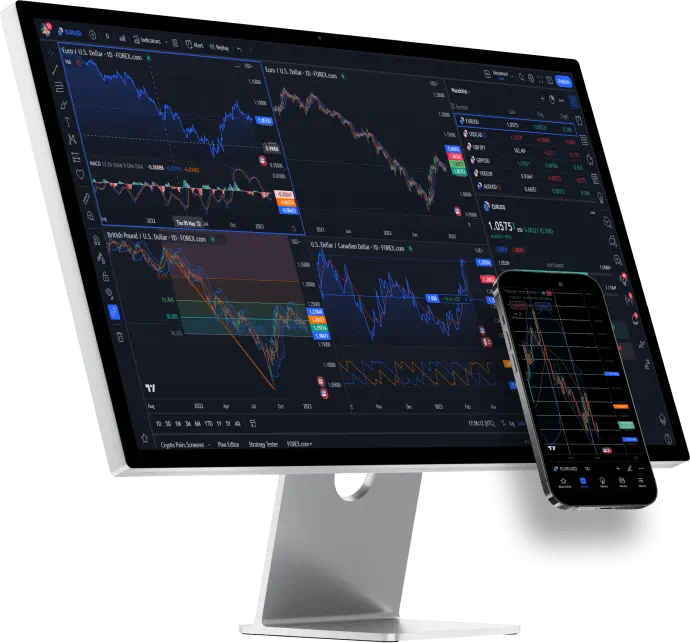
Strengths
- Access to Global Markets: Filipino traders can access forex pairs, indices, commodities, and global equities. Platforms like eToro, XM, and Plus500 offer global exposure with regulated environments.
- Local Deposit Options: Brokers such as FBS, XM, and Octa provide PHP funding and withdrawals through local banks or e-wallets.
- Mobile & Copy Trading: Platforms like IQ Option and eToro excel in mobile functionality and social/copy trading, which appeal to beginners.
- Education & Support: XM and FBS offer webinars and localized customer service to help new traders understand forex and CFD trading.
- Regulated & Secure: All six brokers are internationally regulated (CySEC, ASIC, FCA, etc.), giving Filipino users a degree of security and transparency.
Weaknesses / Challenges
- Currency Conversion Costs: Even when using PHP, deposits are often converted to USD or EUR, leading to small but persistent losses.
- Limited Local Licenses: None of these brokers are registered with the Philippine SEC, which means they operate as international platforms.
- Withdrawal Delays: Smaller withdrawals or e-wallet transfers can sometimes take longer depending on the chosen method.
- CFD Risk: Most platforms (especially Plus500, IQ Option, XM) focus on CFDs — leveraged products unsuitable for absolute beginners.
- Overload of Tools: Advanced analytics, indicators, and order types can confuse new users without trading experience.
Criteria for Choosing a Trading Platform in the Philippines
When selecting a trading platform, Filipino traders should pay close attention to the following factors. These criteria will help ensure both safety and usability in the local context:
Regulation & Legal Compliance
- Prefer platforms regulated by trusted global authorities like FCA (UK), ASIC (Australia), CySEC (Cyprus), or MAS (Singapore).
- Check if the broker is recognized or allowed by the Philippine SEC under the Securities Regulation Code (RA 8799).
- Platforms operating under the Internet Transactions Act (RA 11967) are subject to Philippine consumer protection, which adds a safety net.
Acceptance of Philippine Clients
- Confirm the platform explicitly supports Filipino users.
- Ensure KYC requirements are clear and manageable with Philippine IDs and documents.
Funding in PHP & Withdrawal Options
- Look for brokers that allow PHP deposits and withdrawals through local banks, GCash, Maya, or other trusted e-wallets.
- If the account is USD/EUR based, check conversion fees and exchange margins.
- Always test small deposits and withdrawals first to gauge speed and reliability.
Trading Costs & Fees
- Evaluate spreads, commissions, overnight swaps, and hidden charges.
- Compare platforms’ total cost per trade on the assets you trade most (e.g. USD/PHP forex pair, global stocks, commodities).
- Beware of inactivity or withdrawal fees that eat into profits.
Platform Technology & User Experience
- Choose platforms offering stable execution, low slippage, and reliable uptime.
- Mobile trading is key in the Philippines — apps should be smooth, responsive, and feature-rich.
- Look for advanced tools: charting, indicators, copy trading, API access, automated strategies.
Instrument Variety
- Top platforms should provide a wide range of assets: forex pairs, commodities, indices, local & global stocks, ETFs, and crypto (if allowed).
- More instruments mean greater diversification and trading opportunities.
Customer Support & Localization
- Support should be available in English or Filipino during Philippine business hours.
- Quick resolution of deposit, withdrawal, or account issues is crucial.
Reputation & Track Record
- Prioritize platforms with long operating history and positive reviews from Filipino traders.
- Search local forums, communities, or social groups for real user experiences.
Risk Management & Safety Features
- Ensure brokers offer negative balance protection, stop-loss tools, and segregated client accounts.
- Look for secure login options like two-factor authentication (2FA).
Popular Instruments for Filipino Traders
Filipino traders access both local markets through the Philippine Stock Exchange (PSE) and global markets via international brokers. The most popular instruments reflect liquidity, accessibility, and the ability to diversify.
| Instrument Type | Examples | Why Filipinos Trade Them |
|---|---|---|
| Forex | USD/PHP, EUR/USD, GBP/USD | High liquidity, currency hedging, global exposure |
| Local Equities (PSE) | Jollibee, Ayala Corp, BDO, SM Investments | Exposure to Philippine growth sectors |
| Global Equities/ETFs | Apple, Tesla, S&P 500 ETFs | Access to global tech & blue-chip companies |
| Indices | NASDAQ 100, S&P 500, Nikkei 225 | Market-wide exposure, hedging |
| Commodities | Gold, Oil, Silver | Safe-haven, inflation hedge, diversification |
| Crypto | Bitcoin, Ethereum, Ripple | High volatility, speculative opportunities |
| Bonds/Fixed Income | PH RTBs, Global Bonds | Lower risk, income stability |
Forex Pairs
- Major pairs like EUR/USD, USD/JPY, and GBP/USD are widely traded due to their liquidity and tight spreads.
- USD/PHP is important for Filipinos because it reflects exchange rate movements tied to remittances, imports, and exports.
- Some traders explore crosses (e.g., EUR/GBP, AUD/JPY) for diversification.
Philippine Equities (PSE)
- Local investors often trade blue-chip stocks listed on the PSEi index (e.g., SM Investments, Ayala Corp, Jollibee Foods, BDO Unibank).
- Domestic stocks give exposure to growth in Philippine consumer demand, banking, real estate, and infrastructure sectors.
- The Exchange Traded Funds (ETFs) available on the PSE provide broader market exposure.
Global Equities via CFDs or Brokers
- Through international platforms, Filipinos trade shares of global giants like Apple, Tesla, Amazon, or Google.
- CFDs (Contracts for Difference) allow exposure to price movements without direct ownership, often with leverage.
- ETFs tracking U.S. or global indices (e.g., S&P 500, NASDAQ) are also popular.
Indices
- Popular index instruments include S&P 500, NASDAQ 100, FTSE 100, DAX 30, and Nikkei 225.
- These allow traders to speculate on the overall direction of major economies, rather than focusing on individual stocks.
Commodities & Precious Metals
- Gold (XAU/USD) is a favored safe-haven asset among Filipino traders, often used during times of currency or economic uncertainty.
- Silver, crude oil (WTI/Brent), and natural gas are also commonly traded.
- Commodities give diversification and are attractive during inflationary cycles.
Cryptocurrencies
- Many younger Filipino traders are active in Bitcoin, Ethereum, Ripple, and altcoins, either directly or via CFDs.
- With strong adoption of digital wallets like GCash and Maya, crypto has become a growing part of retail portfolios.
Bonds & Fixed-Income Instruments
- While less common among retail traders, government bonds (RTBs) and fixed-income products are available via banks and brokers for Filipinos seeking stability.
Conclusion
The Philippines is becoming an increasingly dynamic market for retail traders, with growing access to both local equities through the PSE and global markets via international brokers. Choosing the best trading platform is not just about low fees — it requires balancing regulatory safety, PHP deposit and withdrawal options, platform technology, and access to diverse instruments. Ultimately, the best trading platform in the Philippines depends on your priorities — whether it’s cost efficiency, access to global markets, mobile usability, or strong local support. Filipino traders are advised to start with small deposits, test withdrawal reliability, and compare platforms against their own strategies and risk appetite.
Tips for Filipino Traders
- Always verify that the broker accepts Philippine residents and check legal exposure under RA 11967.
- Start with small deposits and withdrawals to test the process.
- Be cautious with leverage; volatility in forex or markets can wipe out capital quickly.
- Use demo accounts to test execution and slippage during high volatility.
- Diversify instruments — don’t rely purely on one market.
- Stick to brokers with solid user reviews from Filipino traders.
- Keep updated on Philippine SEC, PSE, and e-commerce / online-commerce laws as they evolve.
FAQs
Is online trading legal in the Philippines?
Yes. Online trading is legal in the Philippines and is regulated primarily by the Securities and Exchange Commission (SEC) under the Securities Regulation Code (RA 8799). Brokers must comply with licensing and disclosure requirements.



